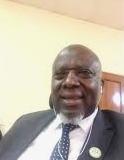Flipped Classroom Model: Enhancing Students’ Interaction and Engagement in Large Classes
DOI:
https://doi.org/10.53449/ije.v5i2.164Keywords:
ERP, learning interaction, learning engagement, out-of-class activities, in-class activitiesAbstract
This study sought to determine the extent of students’ learning interaction and engagement in large flipped classrooms at Islamic University in Uganda (IUIU). With major focus attributed to determining the extent of the flipped classroom method on; student-lecturer, student-student and student-content interactions, and also on students’ emotional and behavioural engagement. The study further sought to determine students’ perceived value of large flipped classroom. A mixed methods approach with an embedded design was adopted, with questionnaires and interviews administered to the 3rd year Education students of 2020/2021 at IUIU. A descriptive analysis was conducted and the results indicate that, the greatest interaction existed between students themselves and students and content, although a moderate interaction was witnessed between students and lecturer. With descriptive means (M) and percentages stated as, Student-Student interaction M=3.14 (34.7%), Student-Content interaction M=3.12 (33.4%) and Student-Lecturer interaction M=2.88 (31.9%). Students greatly engaged through behavioural and emotional attributes, with means noted as M=3.31 (50.8%) and M=3.20 (49.2%) respectively. Students had strong positive perception on the instructional value of large flipped classroom method. Therefore to improve on the interaction and engagement of the learners in large classes, stakeholders should adapt student centred approaches like flipped classroom. Perhaps with technology advancement it’s quite easy. Although not all is done, there is still need to determine the relationship between the students’ interaction and engagement in flipped classroom method and establish relationship between flipped classroom method and learning interactions, and learning engagements in large classes of over 200 students.
Downloads
References
Ahmad, S. Z. (2016). The Flipped Classroom Model to Develop Egyptian EFL Students’ListeningComprehension.9(9),166–178. https://doi.org/10.5539/elt.v9n9p166
Al-Harbi, S. S., & Alshumaimeri, Y. A. (2016). The Flipped Classroom Impact in Grammar Class on EFL Saudi Secondary School Students’ Performances and Attitudes. English Language Teaching, 9(10), 60. https://doi.org/10.5539/elt.v9n10p60
Anderson, L. W., Krathwohl, D. R., Airasian, P. W., Cruikshank, K. A., Mayer, R. E., Pintrich P. R., Raths, J., and Wittrock, M. C. (2001). A Taxonomy for Learning Teaching and Assessment: A Revision of Bloom’s Taxonomy of Educational Objective. David McKay Company, Inc, New York, 1956. http://www.ablongman.com
Bastiaens, J. T., & Weidlich, J. (2018). Technology Matters- The Impact of Transactional Distance on Satisfaction in Online Distance Learning. International Review of Research in Open and Distributed Learning, 19(3).
Bergmann, J., & Sams, A. (2014). Flipped learning: Gateway to student engagement. International Society for Technology in Education, 7(3). PlesecGasparic@pef.uni.lj.si
Brame, C. (2013). Flipping the classroom. Vanderbilt University Center for Teaching. http://cft.vanderbilt.edu/guides-sub-pages/flipping-the-classroom/.
Brooks, A. W. (2014). Information Literacy and the Learning and Perceptions. 8(2), 225–235.
Calderon, A. J. (2020). Massification of Higher Education. The International Encyclopedia of Higher Education Systems and Institutions, 2049–2049. https://doi.org/10.1007/978-94-017-8905- 9_300493
Casasola, T., Nguyen, T., Warschauer, M., & Schenke, K. (2017). Can Flipping the Classroom Work ? Evidence From Undergraduate Chemistry. 29(3), 421–435.
Conner, N. W., Rubenstein, E. D., Dibenedetto, C. A., Stripling, C. T., Roberts, T. G., & Stedman, N. L. P. (2014). Examining Student Perceptions of Flipping an Agricultural Teaching Methods Course. 55(5), 65–77. https://doi.org/10.5032/jae.2014.05065
Creswell, W, J. (2012). Planning, Conducting and Evaluating Quantitative and Qualitative Research. 4th ed. www.pearsonhighered.com.
Creswell, W, J., & Poth, N, C. (2015). Qualitative inquiry and Research Design. 4th ed.
Fisher, R., Ross, B., LaFerriere, R., & Martiz, A. (2017). Flipped Learning, Flipped Satisfaction, Getting the Balance Right. Teaching & Learning Inquiry, 5(2). http://dx.doi.org/10.20343/teachlearninqu.5.2.9
Foley, A. R., & Masingila, J. O. (2014). Building capacity : challenges and opportunities in large class pedagogy ( LCP ) in Sub- Saharan Africa: Higher Education. 67(6), 797–808.
Hamad, A. B., Alarood, A., & Alnaqbi, M, A, T. (2019). The Effect of Flipped Learning on Islamic Education Achievement among United Arab Emirate ’ Tenth Graders and Their Attitudes Towards It The Effect of Flipped Learning on Islamic Education Achievement among United Arab Emirate’ Tenth Graders and Their Attitudes Towards It.
Hesse-Biber & Nagy, S. (2010). Mixed Methods Research: Merging Theory with Practice. www.guilford.com.
Huang, Hsiu-Mei, Shu-Sheng, L., and Chung-Min, L. (2016). Exploring learner acceptance of the use of virtual reality in medical education: a case study of desktop and projection-based display systems. Interactive Learning Environments 24(1), 3-19.
Isaias, P., Mckimmie, B., Bakharia, A., Zornig, J., & Morris, A. (2017). How to Flip a Classroom and Improve Student Learning and Engagement : The case of PSYC1030. 60–69.
Ithnin, R., Syafri, U. A., Beik, I. S., & Huda, M. (2020). Review Article Development of Teaching and Learning of Islamic Education Program : Empirical Evident from Madrasah in Singapore. 7(3), 524–527.
Jamaludin, R. (2016). Flipped : A Case Study in Fundamental of Accounting in MalaysianPolytechnic.3(1),23–31. https://doi.org/10.20448/journal.509/2016.3.1/509.1.23.31
Jang, H. Y., & Kim, H. J. (2020). Education Sciences A Meta-Analysis of the Cognitive , A ff ective and Interpersonal Outcomes of Flipped Classrooms in Higher Education.
Johnston, N., & Karafotias, T. (2016). Flipping the Classroom to Meet the Diverse Learning Needs of Library and Information Studies (LIS) Students. 57(3). https://doi.org/10.12783/issn.2328-2967/57/3/1
Justine, O., John, S. M., & Godfrey, G. B. (2013). Effectiveness of University Teacher Education Curriculum on the Secondary School Teacher Performance in Uganda: The Case of Kyambogo University. Journal of International Cooperation in Education, 3(15), 95-112.
Kanelopoulos, J., Papanikolous, A, K., & Zalimidis, P. (2017). Flipping The Classroom to Increase Students' Engagement and Interaction in a Mechanical Engineering Course on Machine Design. 7(4), 19–34.
Kearsley, G., & Shneiderman, B. (1998). Engagement Theory: A framework for Technology-based Teaching and Learning. Educational Technology, 38(5), 20–23.
Kenney, J. L., & Newcombe, E. (2014). Flipping Instruction in an Undergraduate Education Course : Findings from an Action Research Study. 10, 1–13.
K-12 BluePrint. (2014) A planing resource for personalized learning: Learning Management System Guide. www.k12blueprint.com
Larsen, J. (2015). Adult Students’ Experiences of a Flipped Mathematics Classroom. Adults Learning Mathematics: An International Journal, 10(1), 50-67.
Landis, R. J., & Koch, G. G. (2020). The Measurement of Observer Agreement for Categorical data. International Biometric Society, 33(1), 159-174. https://www.jstor.org/stable/2529310.
Merriam, B, S., & Tisdell, J, E. (2016). Qualitative Research: A guide to design and implement. http://booksupport.wiley.com.
Moore, G. M. (1989). Three types of interaction. American Journal of Distance Education.DOI:10.1080/08923648909526659. https://www.researchgate.net/publication/237404371
Moran, M, C., & Young, A, C. (2015). Questions to consider before flipping: Phi Delta Kappa International, 97(2), 42-46. https://www.jstor.org/stable/24578374.
Pallant, J. (2001). SPSS Survival Manual: A step by step guide to data Analysis Using SPSS. www.openup.co.uk/spss.
Pardo, A., Gasevic, D., Jovanovic, J., Dawson, S., & Mirriahi, N. (2019). Exploring Student Interactions with Preparation Activities in a Flipped Classroom Experience. IEEE Transactions on Learning Technologies, 12(3), 333–346. https://doi.org/10.1109/TLT.2018.2858790
Preece, A., & Hamed, K, P. (2018). Letting the learners lead: Adapting FCM to enhance learner motivation, interaction and academic achievement. 287-306. Al-Shajarah: Journal of Islamic Thought and civilization of the International Islamic University of Malaysia. http://journals.iium.edu.my/shajarah/
Saheeh International. (Ed.). (1997). The Quran: English Meanings. Jeddah, Saudi Arabia. Abul-Qasim Publishing House, Al-Muntada Al-Islami. Quran@almuntada.org
Spilka, R. (2015). Learner-Content Interaction in Flipped Classroom Model. ICTE Journal, 4(3), 53-60. Doi: 10.1515/ijicte-2015-0014
Statutory Instruments Supplement No. 22. (5th, September, 2008). The Universities and Other Tertiary Institutions (Basic Requirements and Minimum Standards for Procurement Education and Training) Regulations. Uganda Gazzete 45(CI). http://ugandanlawyer.com/wp-content/uploads/2019/03/Universities-and-other-tertiary-institutions-basic.pdf
Strayer, Jeremy (2007). The effects of the classroom flip on the learning environment: A comparison of learning activity in a traditional classroom and a flip classroom that used an intelligent tutoring system. PhD diss., The Ohio State University.
Sun, C, J., & Wu, Y (2016). Analysis of Learning Achievement and Teacher-Students interactions in Flipped and Conventional classroom. International Review of Research in Open and Distributed Learning, 17(1).
Uganda Bureau of Statisitcs. (2020). Statiscal Abstract. https://www.google.com/search?q=Uganda+bureau+of+statistics+2020.
UNESCO IESALC. (2020). Toward Universal Access to Higher Education: International Trend. Higher Education in Latin America and Caribbean (IESALC). United Nations Educational, Scientific and Cultural Organization. http://www.unesco.org/open-access/terms-use-ccbysa-en
Velegol, B, S., Zappe, E, S., & Mahoney, E. (2015). Advances in Engineering Education The Evolution of a Flipped Classroom : Evidence-Based Recommendations. 1–37.
Webster, D. R., Majerich, D. M., & Madden, A. G. (2016). Advances in Engineering Education Flippin ’ Fluid Mechanics - Comparison Using Two Groups. 1–20.
Yusoff, B.S.M. (2019). ABC of Content Validation and Content Validity Index Calculation. Education in Medicine Journal, 11(2), 49–54. https://doi.org/10.21315/eimj2019.11.2.6
Zainuddin, Z. (2017). First- Year College Students ’ Experiences in the EFL Flipped Classroom : A Case Study in Indonesia. 10(1), 133–150.
Zainuddin, Z., & Halili, S. H. (2016). Flipped classroom research and trends from different fields of study. International Review of Research in Open and DistanceLearning,17(3),313–340. https://doi.org/10.19173/irrodl.v17i3.2274.
Zainuddin, Z & Hermawan, D. H. (2019). Flipp the classroom with a LMS: Designing a Technology Bassed learning Model. Journal of education and Learning, 13(3), 309317. Doi.10.11591/edulearn.v13i3.12886. http//www.researchgates.net/publication/3








